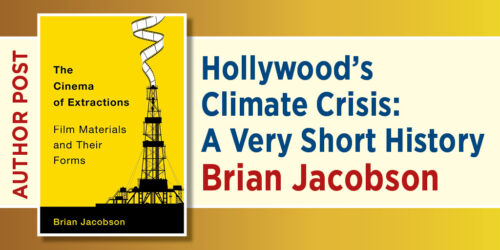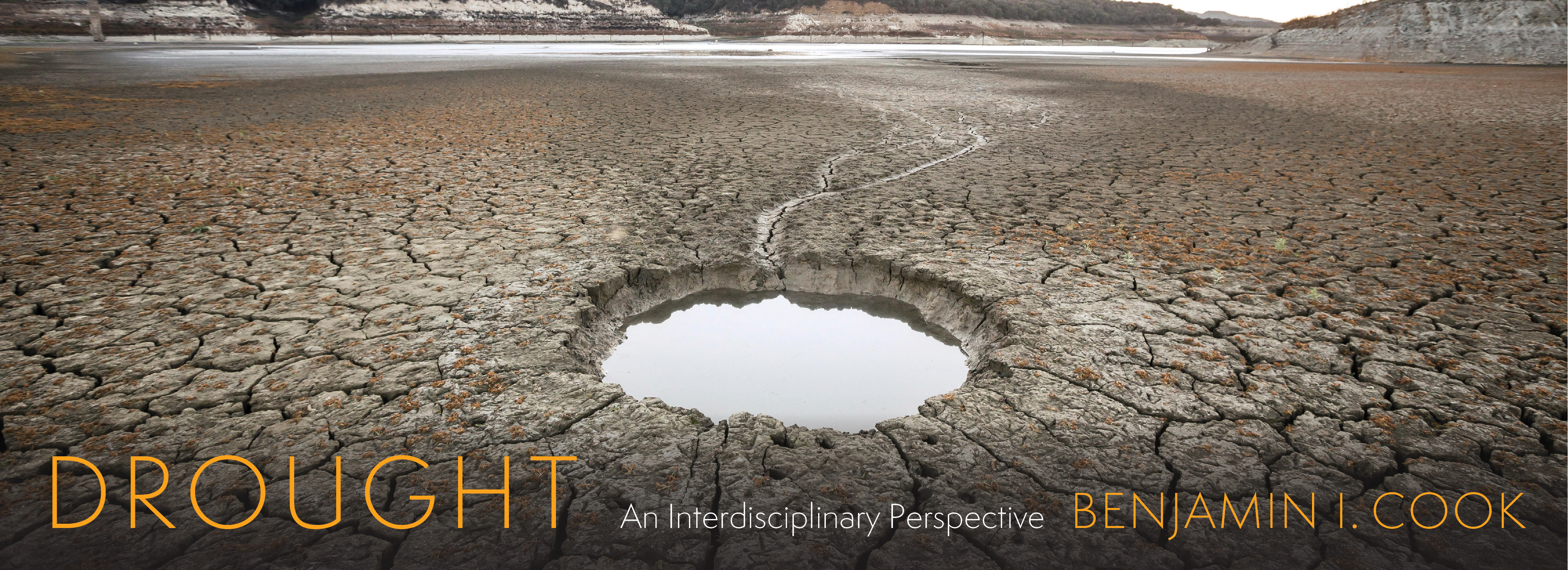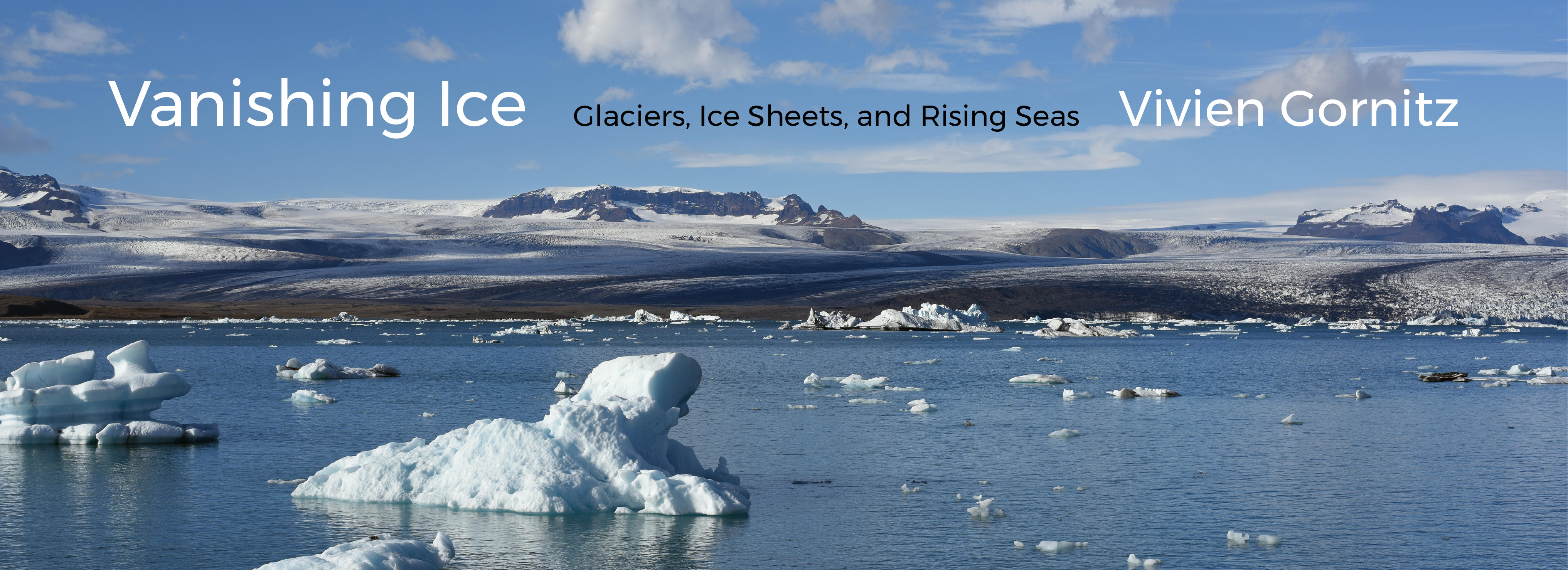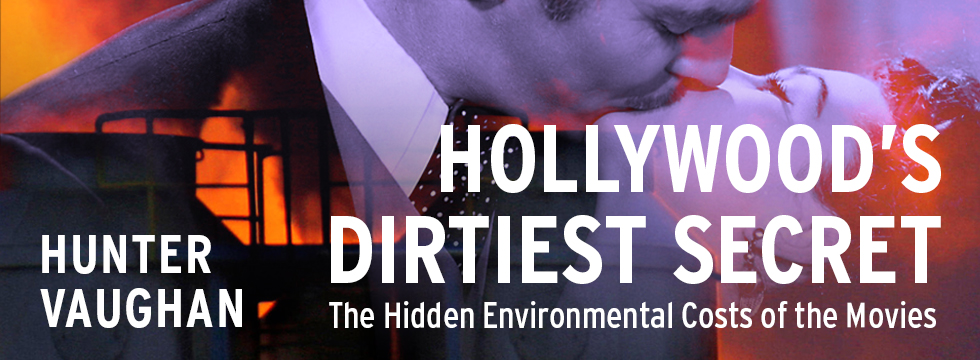Rob Verchick in Conversation with Robyn Massey About The Octopus in the Parking Garage

In November 2016, Richard Conlin discovered an unexpected guest in his parking garage: an octopus. The photos he took quickly went viral, but to Rob Verchick, a leading climate law scholar and the author of The Octopus in the Parking Garage: A Call for Climate Resilience, it was a potent symbol of the disruptions that a changing climate has already brought to our doorsteps. In this interview with the publicist Robyn Massey, Verchick defines climate resilience and explains why it’s needed and how the need for “hope” will drive the activism we need for a sustainable future.
Robyn Massey: First off, the title? What’s that all about?
Rob Verchick: Well, it’s based on a true story.
Back in 2016, a man living in a shoreline condominium complex in Miami walked into his building’s elevated parking structure to find a wide, shallow pool of water and, at the center, a live octopus flopping around. The guy—his name was Richard Conlin—alerted security and then posted several photos from his phone, which of course went viral.
Massey: What was the octopus doing in the parking garage?
Verchick: Basically, a seasonal tide, amplified by sea level rise, had caused a storm drain to reverse and spit out an octopus who had been feeding at the other end of the pipe. I saw Conlin’s photos when they popped up on Facebook, and I wrote an op-ed for the Miami Herald with a friend about how we have to start preparing for a new future of unusual extremes. The octopus is an “eight-armed alarm bell” I say, telling us to wake up and get ready for climate change.
Massey: Is this your first book? What drove you to write it, and why now?
Verchick: I’ve written a few other books, including one about my experiences in New Orleans during and after Hurricane Katrina. After Katrina, I decided to devote the rest of my career to climate-related disaster.
The Octopus in the Parking Garage is my way of bringing years of my personal, academic, and government experience with climate resilience into a conversation that regular people, nonexperts, could relate to and engage with.
Massey: When you say “climate resilience,” what do you mean?
Verchick: In lay terms, climate resilience means not just bouncing back from a storm or wildfire but bouncing back better. Or as an expert might say, climate resilience is the ability to manage and recover from a climate impact in a way that allows a community to learn, adapt, and thrive.
For many years, climate resilience was frowned upon in environmental circles—it was seen as “giving up” on solving the underlying problem of carbon pollution. Al Gore once called it a “lazy” way out. He’s retracted that, and most climate advocates are now supporters of climate resilience.
That’s because it has become clear that people are suffering now, companies are losing wealth now, important habitats are unraveling now. A recent report from researchers at Stanford concluded that by the end of the century, climate effects will cost the United States more than half a trillion dollars every year unless we reduce our vulnerability. Something has to be done.
The good news is that today President Biden and the governors of many states, including Louisiana, where I live, are devoting more and more resources to building climate resilience into our transportation network, the power grid, and fire-prone areas in the rural and suburban West. This is a pivotal time. If we’re smart, we can use that momentum to make America much safer in this new era.
Massey: What is the problem you are looking to solve with your book. Who should read it and why?
Verchick: There’s no question that because of climate change the world is getting hotter, wetter, drier, and weirder. We see it with our own eyes. We urgently need to cut carbon emissions to avoid the dangers we can’t manage. But we also need to manage the dangers we can no longer avoid. We need to learn how to survive and thrive in the midst of higher temperatures, rising seas, and crazier storms.
Up until now, preparing for climate effects has mainly been an insider’s game, a topic reserved for civil engineers, health experts, lawyers, and policy makers. Octopus opens the conversation to everyone.
Massey: Yes, as you indicate, climate resilience is fraught with complexity, complications, and trade-offs. Focus and cooperation are hard to come by. How do you look to overcome this?
Verchick: I start by laying out the basics of how climate breakdown is already causing damage then pivoting to the questions at the heart of resilience-based efforts: How do we reach across party lines and get people to care more? How do we make plans that are flexible enough to handle surprises? How do we involve and address disadvantaged communities, which already bear the brunt of environmental risk? When do we resist? When do we adjust? When do we retreat? And by the way, who gets to decide?
There’s no one-size-fits-all solution. Any strategy for a threatened area, whether a city, a suburb, or an ocean, must be attuned to the local geography, its culture, and its politics. So in the book I take readers on several community-oriented journeys, laying out the options and offering guidelines and insights to shape the conversation.
There is a vibrant landscape of climate-resilience efforts if you know where to look. You have to get out of the house. My research took me kayaking through miles of Louisiana bayous, backpacking in some of the last refuges of Joshua trees in the Mojave desert, scuba diving off of Key Largo with community scientists working to restore coral reefs. And I came back with many arrows of hope in my quiver.
Massey: You’re a law professional. What is your take on the wave of lawsuits brought by states and municipalities (for instance, Rhode Island, the city of Baltimore, the city of Boulder) against fossil fuel companies for their contributions to climate change?
Verchick: Cases like these are being brought all over world, basically in response to decades of inaction by policy makers. Whereas some cases have succeeded overseas, none has succeeded in the United States—not yet. But that could change, particularly in state court systems, where judges and juries are more attuned to local effects.
Massey: What, specifically, are the plaintiffs in these cases looking to achieve? Is this an effective approach to achieving the climate resilience that you propose?
Verchick: There are at least three things that plaintiffs hope to achieve in these suits. First, they hope to use the litigation process to unearth more evidence about how fossil fuel companies have misled the public about the dangers of climate change. Second, they believe that damage awards, or at least the threat of damage awards, will encourage defendant companies to pivot more quickly from fossil fuel to renewable energy. Finally—and this is most relevant to my focus—states and local governments see damage awards as a way of funding expensive resilience efforts, like elevating bridges and restoring sinking wetlands.
I welcome this trend, especially for the first two reasons. But litigation shouldn’t be the preferred way to fund climate resilience. That’s because success in such lawsuits requires costly financial investments and very likely a progressive-minded court. Maybe Boulder, Colorado, can succeed in a game like that. But New Orleans or Jackson, Mississippi, will be left on the sidelines. A resilience strategy that does not attend to the more disadvantaged groups in our population is not really resilient.
Massey: Climate change? Climate crises? Climate resilience? Which of these terms do you prefer to use, and when is it important to use one over the other?
Verchick: Words are important. They convey both factual and cultural meanings. I choose phrases that I think are, above all, factually accurate and that mean something culturally or emotionally to the people I’m connecting with. Climate change is a phrase I sometimes use, though I prefer climate crisis or climate breakdown. After all, change is not the problem—the climate has always followed cycles. It’s the sudden and extreme upheaval of the natural climate cycle that is the problem.
Climate resilience, as I said, describes the ability to survive and thrive in the midst of climate breakdown. Some people call this preparing for climate breakdown or adapting to climate breakdown. I use those terms too, sometimes. But for me resilience captures a sense of robustness and flexibility that I think is especially important in talking about climate effects. You are never preparing or adapting to any one change; you are aiming for a broad strength so that you can take on almost anything that comes your way. In that way, building climate resilience is like improving your health through exercise and a good diet. It gives you something to work toward rather than something to run away from.
Massey: Youth is wasted on the young, it is said. There is a paradox where there is a cohort of youth who are fired up about climate crises. Meanwhile, some adults say, “Oh, well, we’ll have to leave it to the next generation.” This attitude has often troubled me because older people have experience, relationships, and skills that the youth will eventually accrue. On the other hand, the youth are nobody’s fool. Elders may feel demoralized. Youth may be frustrated. What gives? What would you recommend needs to happen?
Verchick: I’ll tell you a story from the book. In researching efforts to restore coral reefs harmed by ocean heat waves, I met a budding marine scientist, Kara Norman, who at the time was a fifteen-year-old high school student in Key West, Florida. She’s a certified master diver and one of the youngest research divers in the United States. She learned these skills over many years through an educational program called DiveN2Life, which trains kids in scuba diving and gets them involved in coral monitoring, reef seeding, and coral restoration. Kara contributed to coral resilience studies throughout the Florida Keys and in the Virgin Islands, too. When she’s not in the water, she’s speaking about ocean policy in town hall meetings or protesting against increased ship traffic.
“How do you do all this,” I asked. “What about school, what about your social life?”
And she said, “You know, I don’t feel like I have a lot of choice.” She knows that it’s my generation and previous ones that sent things spinning out of control. She knows she is going to be living with the results of that longer than I will. But she was very clear that much of her development and success as a scientist and a human being was very much a product of those members of the older generations who have loved her, mentored her, and even funded some of her research.
But there’s one thing she doesn’t like. She told me that every once in a while she will run into a marine scientist of a certain age who will suggest that her work and that of her peers will never be enough to move the needle, that the world is beyond repair and without hope. Kara and her friends have no use for thinking like that. Without hope, there’s no action. I learned that time and time again from activists of all sorts, but primarily from those of high-school and college age. If that’s the product of youth, I assure you, it’s not being wasted.
Massey: So then, what needs to happen? How do we increase this climate hope so that we might spur more climate action?
Verchick: It starts with asking what I call the climate questions, namely: What do I care about? How will climate breakdown challenge that thing I care about? And What can I do to reduce or overcome that challenge?
We used a version of these questions when I served at the EPA in the Obama administration. What I love is that this inquiry works at any level. Say you’re Pete Buttigieg and you run the Department of Transportation. You care about building roads and bridges that won’t flood during storms or buckle during heat waves. So you need to think about how the future is going to challenge that mission and what you can do about it. Maybe you’re an oyster harvester in southern Louisiana. You care about having healthy oysters in the Gulf and knowing where they are going to thrive. You might start learning more about the future hydraulics of the region and maybe investigate innovations in genetic engineering that are meant to develop heartier species. Or maybe you and your family are looking to relocate to a new town and buy a home. You care about home insurance costs and your family’s health and safety. But you’re moving to an area where the wildfire season has expanded year-round. You could go on a brokerage site like Redfin and compare climate risk scores for various properties. All of that is climate resilience.








